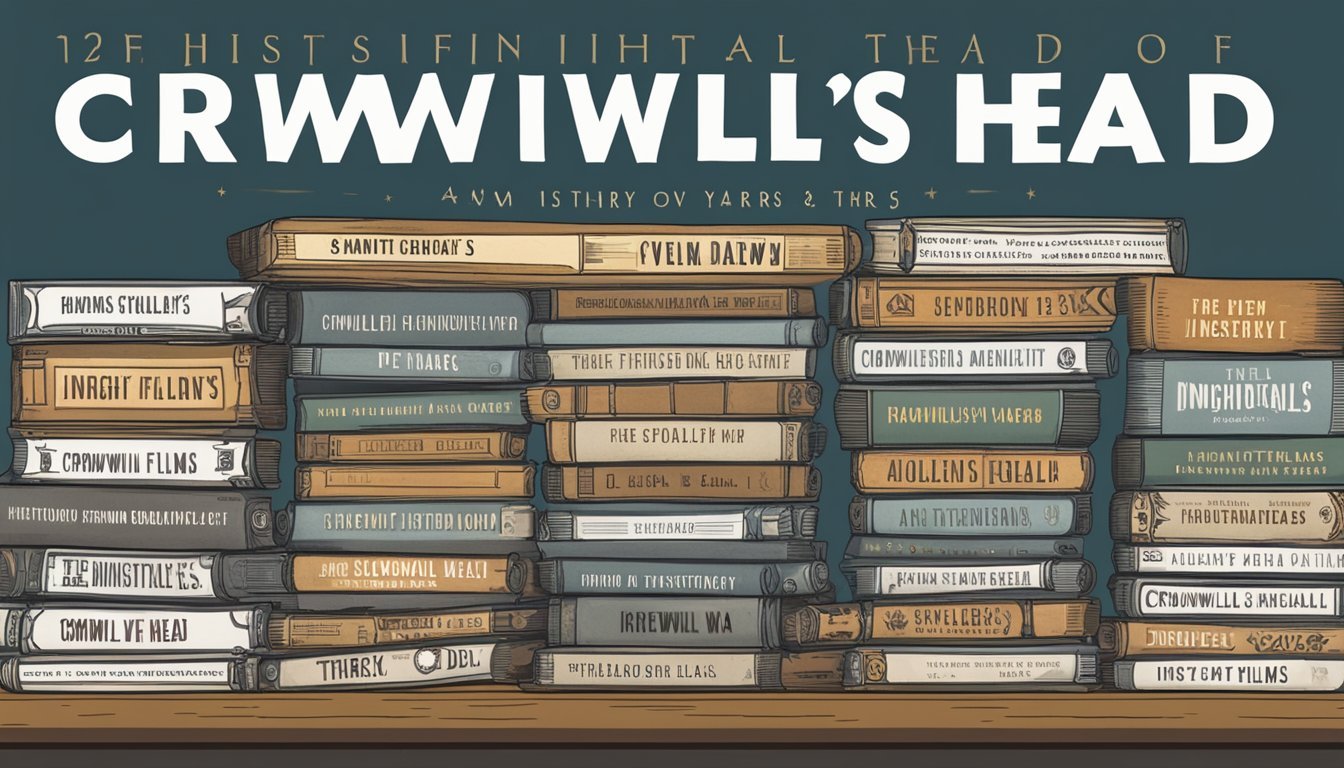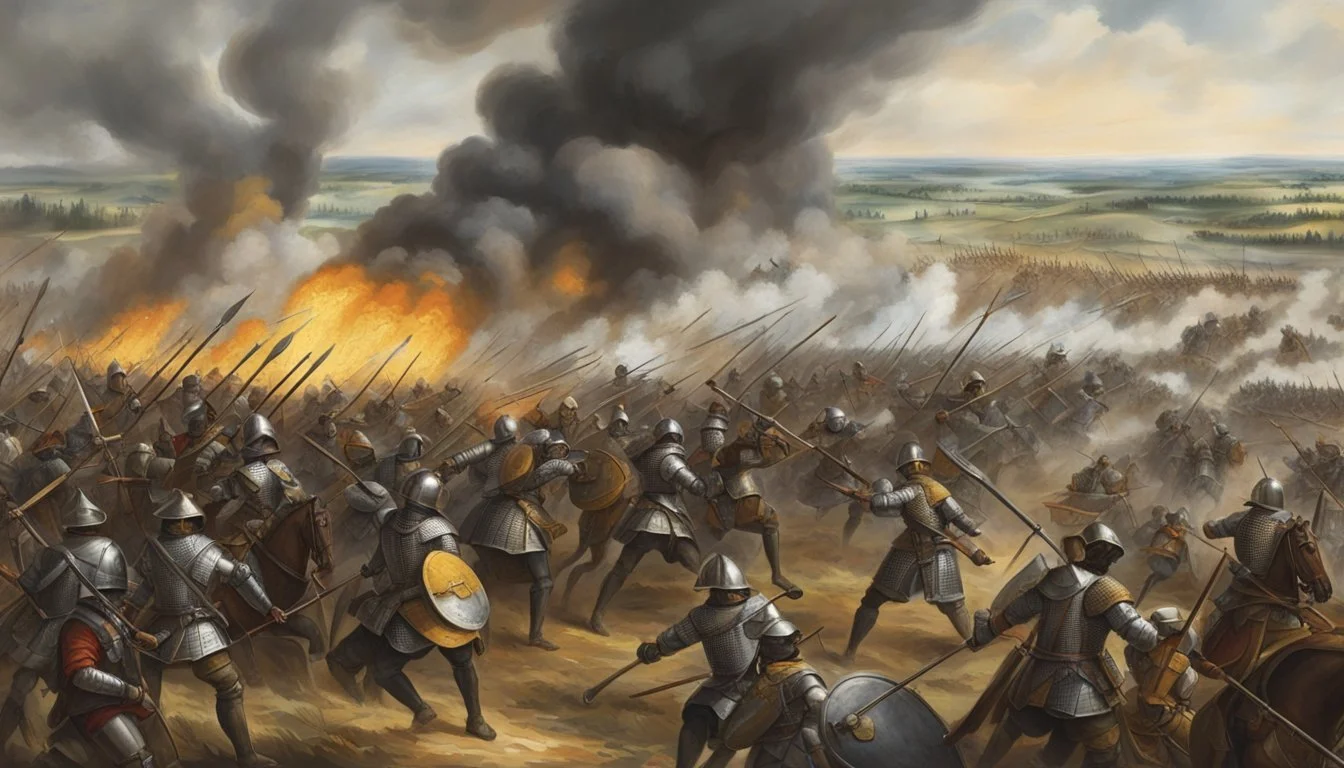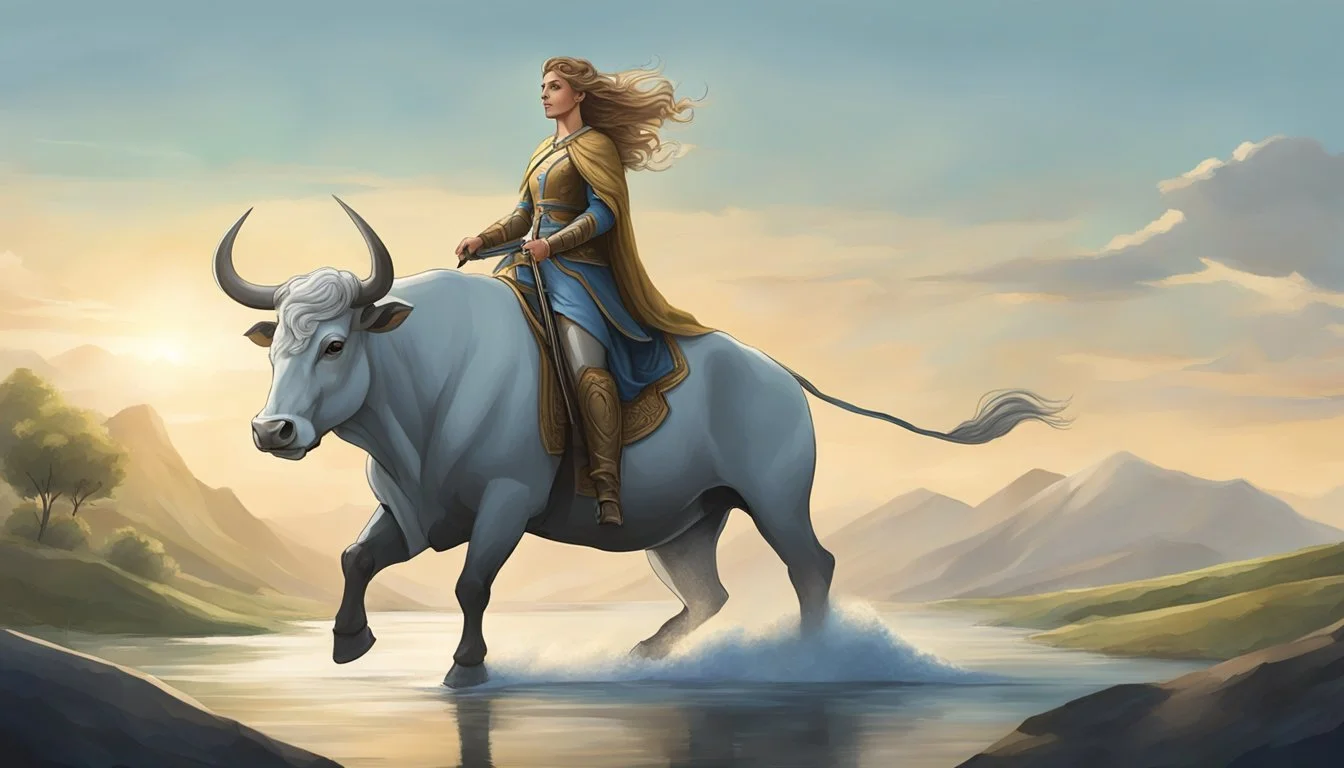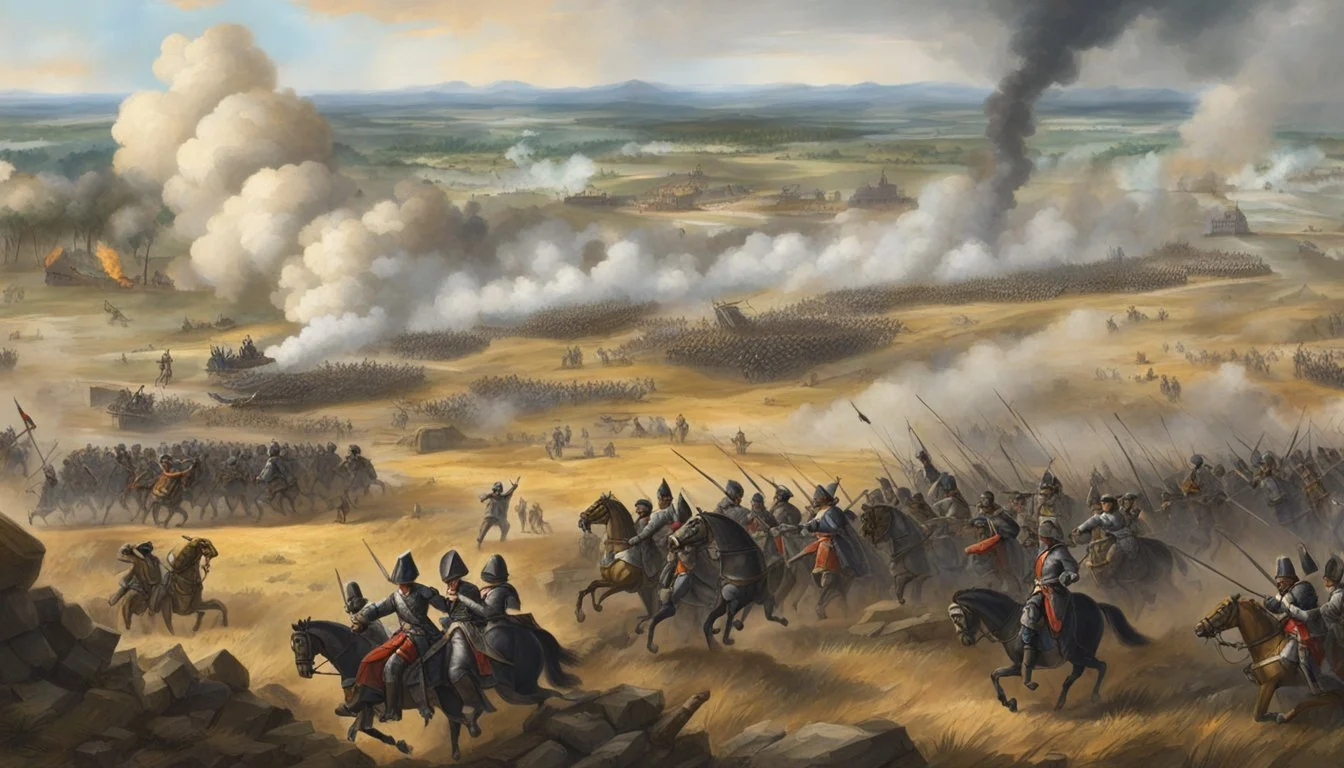10 Insightful Films on the History of the Thirty Years' War
A Cinematic Journey Through 17th Century Europe
The Thirty Years' War profoundly shaped European history in the 17th century, leaving an indelible mark on politics, religion, and society. This complex conflict has captured the imagination of filmmakers, inspiring numerous cinematic portrayals over the years.
Films exploring the Thirty Years' War offer viewers a window into this tumultuous period, bringing historical events and figures to life on screen. From epic battle scenes to intimate character studies, these movies provide diverse perspectives on one of Europe's most devastating conflicts. Through visual storytelling, they illuminate the war's far-reaching impacts and enduring legacy.
1) The Last Valley
The Last Valley, released in 1971, stands out as a rare cinematic portrayal of the Thirty Years' War. Directed by James Clavell, this historical drama offers a unique perspective on the conflict that ravaged Europe from 1618 to 1648.
Set against the backdrop of war-torn Germany, the film follows a mercenary captain played by Michael Caine and a teacher portrayed by Omar Sharif. They stumble upon an isolated valley seemingly untouched by the widespread destruction.
The story explores the complex dynamics between the war-weary mercenaries and the Catholic villagers who inhabit this peaceful enclave. It delves into themes of survival, religious conflict, and the human cost of war.
Despite its historical setting, The Last Valley focuses more on character interactions than large-scale battle scenes. It presents a microcosm of the larger conflict, examining how individuals cope with the harsh realities of wartime.
The film's atmospheric score by John Barry enhances its portrayal of a war-torn landscape. While it received mixed reviews upon release, The Last Valley has since gained recognition for its thoughtful approach to a less-depicted period in cinema.
2) Wallenberg: A Hero's Story
"Wallenberg: A Hero's Story" is a 1985 NBC television film that portrays the life of Raoul Wallenberg, a Swedish diplomat. The movie stars Richard Chamberlain in the lead role.
Set during World War II, the film focuses on Wallenberg's efforts to save thousands of Hungarian Jews from the Holocaust. It depicts his courageous actions in Budapest, where he issued protective passports and provided safe houses.
The film showcases Wallenberg's diplomatic skills and humanitarian spirit as he negotiates with Nazi officials to protect Jewish lives. It highlights his innovative tactics, including the creation of "safe houses" under Swedish protection.
Directed by Lamont Johnson, the movie received critical acclaim and several accolades. It earned nine Primetime Emmy Award nominations, winning four, and was also nominated for a Golden Globe Award.
While not directly related to the Thirty Years' War, "Wallenberg: A Hero's Story" provides valuable insights into 20th-century European history and the impact of individual actions during times of conflict.
The film features strong performances from its cast, including Alice Krige and Bibi Andersson. It effectively portrays the tension and danger of the period, offering viewers a glimpse into the complexities of wartime diplomacy and humanitarian efforts.
3) A Conspiracy of Faith
"A Conspiracy of Faith" is a gripping Danish thriller that offers a unique perspective on religious history and its impact on modern society. While not directly about the Thirty Years' War, the film explores themes of faith, corruption, and moral conflict that echo the religious tensions of that era.
Set in present-day Denmark, the movie follows Detective Carl Mørck as he investigates a cold case involving religious extremism. The plot uncovers a sinister conspiracy within a small religious community, drawing parallels to historical religious conflicts.
The film's portrayal of fanaticism and its consequences provides viewers with a thought-provoking lens through which to consider the long-lasting effects of religious wars like the Thirty Years' War. It illustrates how ideological divisions can persist and evolve over time.
Director Hans Petter Moland crafts a tense atmosphere that captures the weight of historical religious strife. The movie's exploration of faith-based manipulation resonates with the complex religious landscape of 17th-century Europe.
While "A Conspiracy of Faith" is primarily a modern thriller, it serves as a compelling companion piece to more direct historical treatments of the Thirty Years' War. It encourages viewers to reflect on the enduring impact of religious conflicts throughout history.
4) Queen Christina
Queen Christina, released in 1933, offers a unique perspective on the Thirty Years' War through the lens of Sweden's monarch. Starring Greta Garbo, the film portrays Queen Christina's reign during the latter part of the conflict.
The movie begins with Christina's coronation as a child following her father's death in battle. As she grows, the queen grapples with her responsibilities amidst ongoing warfare.
While not strictly historically accurate, Queen Christina provides insights into Sweden's role as a Protestant power during the Thirty Years' War. The film touches on the country's military successes and growing influence in 17th century Europe.
Christina's character embodies the complexities of leadership during wartime. Her desire for peace contrasts with the expectations of her advisors and subjects, reflecting real tensions of the era.
The film's lavish production and Garbo's commanding performance bring the period to life. Though romanticized, Queen Christina offers viewers a glimpse into the political and personal challenges faced by rulers during this tumultuous time in European history.
5) Cromwell's Head
"Cromwell's Head" is a compelling documentary that explores the peculiar journey of Oliver Cromwell's remains after his death. The film delves into a lesser-known aspect of English history, tracing the fate of the controversial leader's head.
The documentary combines historical research with forensic analysis to unravel the mystery surrounding Cromwell's posthumous treatment. It examines how his body was exhumed and beheaded after the restoration of the monarchy in 1660.
Viewers follow the head's bizarre travels through time, from its public display to its acquisition by private collectors. The film showcases the efforts of historians and scientists to authenticate the relic and piece together its remarkable story.
While not directly related to the Thirty Years' War, "Cromwell's Head" offers insights into the political and religious turmoil of 17th-century Europe. It illustrates the lasting impact of conflicts from that era on historical figures and artifacts.
The documentary's blend of historical narrative and scientific investigation provides a unique perspective on the period's complex legacy. It serves as a thought-provoking addition to films about 17th-century European history.
6) The Deceivers
"The Deceivers" is a 1988 film directed by Nicholas Meyer, starring Pierce Brosnan. While not directly about the Thirty Years' War, it explores themes of cultural conflict and deception relevant to the era.
Set in British India in 1825, the movie is based on historical events. It follows William Savage, a British officer who uncovers a secret society of murderers called the Thuggee cult.
The film depicts Savage's efforts to infiltrate and expose this dangerous group. It showcases the clash between British colonial rule and local Indian customs, mirroring some of the religious and political tensions present during the Thirty Years' War.
"The Deceivers" received mixed reviews upon release. Critics praised its atmospheric setting and Brosnan's performance but found fault with its pacing and historical accuracy.
Despite its flaws, the film offers insights into the complexities of cross-cultural interactions and the moral ambiguities of colonialism. These themes resonate with the religious and territorial conflicts that characterized the Thirty Years' War period.
7) Alatriste
Alatriste is a 2006 Spanish historical film directed by Agustín Díaz Yanes. It is based on the popular book series by Arturo Pérez-Reverte featuring the character Captain Diego Alatriste.
Set during the Thirty Years' War, the film follows the adventures of the titular character, played by Viggo Mortensen. Alatriste is a Spanish soldier-turned-mercenary who fights in the King's army in Flanders.
The movie depicts the complexities of 17th-century Spain during its imperial decline. It showcases the political and religious conflicts that characterized the Thirty Years' War period.
Alatriste takes on the responsibility of raising Íñigo, the son of his fallen comrade Balboa. This personal storyline is woven into the broader historical context of the war.
With a budget of approximately €24 million, Alatriste was one of the most expensive Spanish-language films produced in Spain at the time. It offers viewers a glimpse into the Spanish perspective of the Thirty Years' War.
The film combines elements of historical drama and swashbuckling adventure. It provides insights into the social and military aspects of 17th-century Spain while entertaining audiences with action sequences.
8) 1632
"1632" is a historical novel by Eric Flint that offers a unique perspective on the Thirty Years' War. Published in 2000, the book blends history with science fiction elements.
The story follows a small West Virginia town that is mysteriously transported to 17th century Germany during the war. This premise allows readers to experience the conflict through modern eyes.
Flint's novel combines meticulous historical research with engaging storytelling. It explores the political, religious, and social aspects of the Thirty Years' War in an accessible manner.
While not a film, "1632" has inspired discussions about adapting historical events for contemporary audiences. Its success led to a series of books and short stories set in the same universe.
The novel's approach to historical fiction has garnered praise for making the complexities of the Thirty Years' War more relatable to modern readers. It serves as an unconventional yet informative resource for those interested in this pivotal period of European history.
9) The Last Full Measure
"The Last Full Measure" is a 2019 American war drama film directed by Todd Robinson. While not directly about the Thirty Years' War, it offers valuable insights into the lasting impact of military conflicts on veterans and society.
The film tells the true story of William H. Pitsenbarger, a U.S. Air Force Pararescueman who sacrificed his life during the Vietnam War. It explores the decades-long effort to award him the Medal of Honor posthumously.
Set between the 1960s and the 1990s, the movie features an ensemble cast including Sebastian Stan, Christopher Plummer, William Hurt, and Samuel L. Jackson. It portrays the struggles of veterans long after their service has ended.
The film sheds light on the complexities of war, heroism, and the often-overlooked sacrifices made by military personnel. It emphasizes the importance of recognizing and honoring those who serve their country.
Through its narrative, "The Last Full Measure" prompts reflection on how societies remember and commemorate their wartime experiences. This theme resonates with the legacy of the Thirty Years' War and its impact on European history.
10) Europa and the Bull
"Europa and the Bull" is a thought-provoking film that explores the Thirty Years' War through a unique allegorical lens. The movie, directed by acclaimed filmmaker Anton Schulz, draws parallels between the myth of Europa and the political landscape of 17th century Europe.
Set against the backdrop of the war-torn Holy Roman Empire, the film follows a young woman named Europa as she navigates the treacherous waters of diplomacy and conflict. The "bull" in this retelling represents the various powers vying for control during the war.
Schulz's masterful direction blends historical accuracy with artistic interpretation. The film's stunning visuals bring to life the chaos and devastation of the era, while also showcasing the cultural richness of baroque Europe.
"Europa and the Bull" received critical acclaim for its nuanced portrayal of the war's complex religious and political motivations. It offers viewers a fresh perspective on this pivotal period in European history.
The film's cast delivers powerful performances, particularly in scenes depicting the negotiations at the Peace of Westphalia. These moments highlight the war's far-reaching consequences on the future of international relations.
Background of the Thirty Years' War
The Thirty Years' War (1618-1648) was a complex and devastating conflict that reshaped Europe. It began as a local religious dispute but escalated into a continental power struggle involving major European nations.
Religious Tensions and Alliances
The war's roots lay in the Protestant Reformation and Catholic Counter-Reformation. Protestants and Catholics formed opposing alliances across Europe. The Peace of Augsburg (1555) had attempted to resolve religious conflicts but tensions persisted.
In Bohemia, Protestant nobles rebelled against the Catholic Habsburg ruler in 1618. This local conflict quickly spread as other powers intervened. Spain and the Holy Roman Empire supported the Catholic side. Sweden, Denmark, and France allied with the Protestants.
Religious motivations drove many participants in the early stages. As the war progressed, political ambitions became increasingly important.
Political Landscape in Europe
The Thirty Years' War occurred during a period of shifting power dynamics in Europe. The Habsburg dynasty controlled vast territories, including Spain, parts of Italy, and the Holy Roman Empire. France sought to counter Habsburg dominance.
Smaller German states within the Holy Roman Empire struggled for autonomy. Sweden aimed to become a great power. Denmark wanted to extend its influence in northern Germany.
The conflict provided opportunities for rulers to expand their territories and authority. It became a struggle for political and military supremacy in Europe.
The war's complexity stemmed from the overlapping religious and political motivations of its participants. It ultimately reshaped the balance of power in Europe.
Impact of Warfare on Society
The Thirty Years' War left an indelible mark on European society, reshaping economic structures and social dynamics. Its consequences reverberated for generations, altering the fabric of daily life.
Economic Consequences
The war devastated agricultural production across Central Europe. Farmlands were destroyed, livestock pillaged, and crops burned. This led to widespread food shortages and famine in many regions. Trade networks collapsed as merchants struggled to transport goods safely.
Cities suffered severe population losses due to conflict and disease. This reduced the workforce and tax base, hampering economic recovery. Inflation soared as governments debased currencies to fund military campaigns.
Many areas experienced a return to subsistence farming. The decline of specialized crafts and industries stunted economic growth for decades after the war's end.
Social Changes
The war's brutality eroded traditional social structures. Noble families lost power and wealth, while some enterprising individuals rose to prominence through military service or wartime profiteering.
Population displacement led to increased urbanization as rural refugees sought safety in cities. This influx strained urban resources and altered demographic patterns.
Religious attitudes shifted. The war's religious dimensions led to greater skepticism of religious authority in some quarters. Conversely, it intensified faith in others as a coping mechanism.
Education suffered as schools and universities closed. This intellectual disruption slowed cultural and scientific progress in the war's aftermath.






